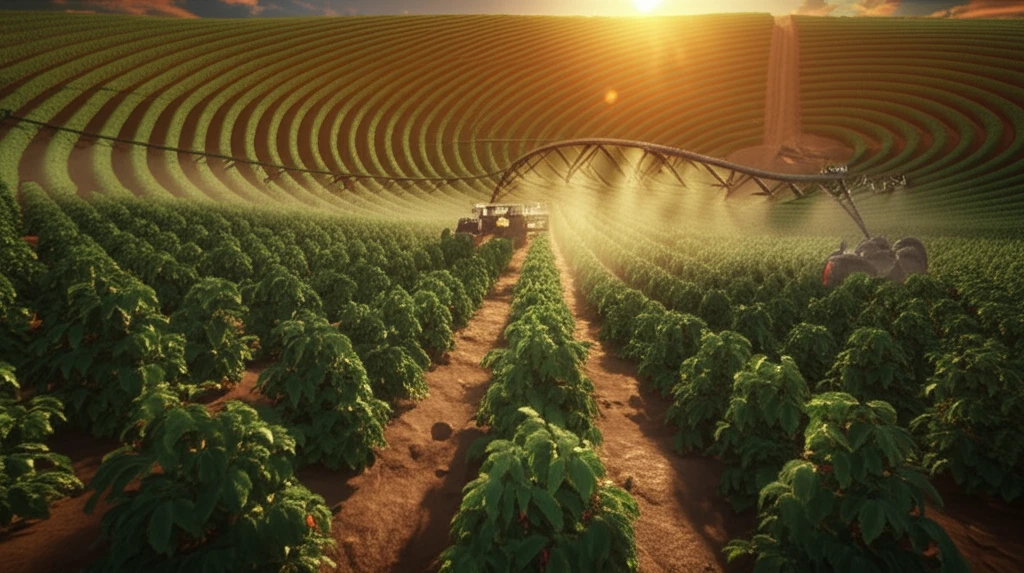
Maximize Your Coffee Harvest: A Simple Guide to Circular Planting
"Unlock the secrets to efficient mechanized coffee harvesting with circular planting systems. Learn how to optimize your yield and minimize plant stress."
Mechanized coffee harvesting is transforming coffee production, offering significant benefits to producers. However, the success of this technology hinges on careful planning, proper crop development, and precise harvester adjustments. Without these, mechanized harvesting can stress the plants more than traditional manual methods.
A study conducted in Patos de Minas, MG, Brazil, explored these challenges. The research focused on assessing the impact on plant health and the quality of mechanized harvesting of coffee grown in a circular planting system under a center pivot irrigation setup. The study also examined two different rod vibration frequencies and employed statistical process control to analyze the results.
The aim was to identify best practices that ensure efficient and gentle harvesting. Whether you're a seasoned coffee farmer or new to the industry, understanding these insights can help you optimize your operations and improve your coffee yield. Let’s dive into the findings and explore how to make the most of mechanized harvesting in circular planting systems.
Understanding Circular Planting Systems and Harvest Quality

The research revealed several key findings regarding the impact of circular planting on coffee harvests. One notable observation was the effect of negative bienniality on the coffee crop. Bienniality refers to the tendency of coffee plants to produce high yields in one year followed by low yields in the next. The study found that negative bienniality reduced the initial coffee load, effectively eliminating the influence of varying insolation conditions.
- Negative bienniality reduces initial coffee load, minimizing insolation effects.
- Harvest quality indices show asymmetrical distribution, indicating high variability.
- Stripping efficiency is influenced by axle positioning and remains statistically stable.
- Plant damage from harvesting is within acceptable limits and under statistical control.
Optimizing for the Future
This research underscores the importance of understanding the nuances of mechanized coffee harvesting within circular planting systems. By focusing on statistical control and careful monitoring, producers can maintain stable and acceptable harvesting practices. Further research and technological advancements will likely continue to refine these methods, paving the way for more sustainable and efficient coffee production.
